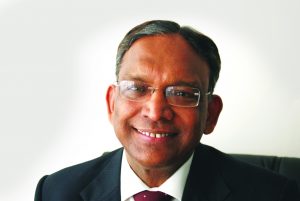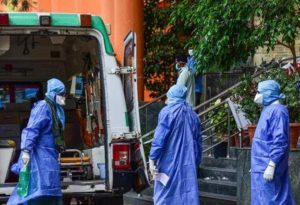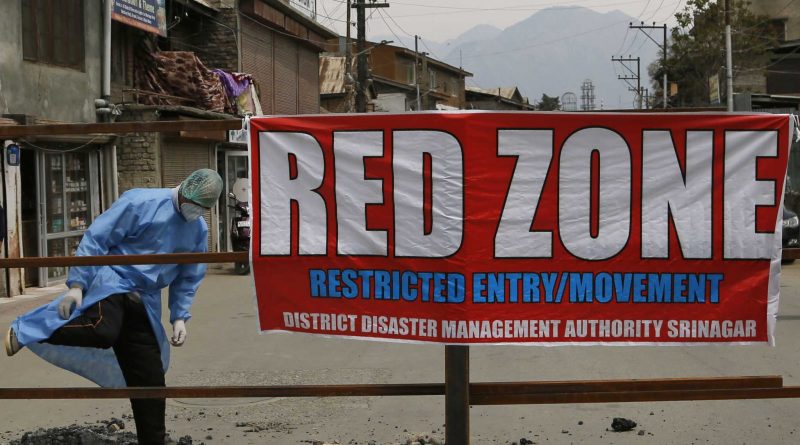Larger Implications of the Pandemic

COVID-19 has exposed many chinks in India’s healthcare system. The crisis has also given us an opportunity to plug the loopholes in the state of health services in the country. Here is an unexplored perspective to the unprecedented health crisis…
By Dr Vinay Aggarwal
It’s been more than a month and a half since Prime Minister Narendra Modi announced complete lockdown in view of the emerging COVID-19 pandemic. It was indeed a bold and timely call taken for a country like ours and has been beneficial in terms of flattening the curve to a great extent.
Advantages of lockdown
On the day India crossed 1 million tests, its total number of positive cases was still far less than the likes of Germany, Italy, Spain and even the United States. In terms of recovery, we have seen a positive trend of almost 27 per cent and mortality rate of around 3.3 per cent. Most of the positive cases were mild type/asymptomatic and did not warrant typical ICU care.
Now that we have braved through the main lockdown & have all accepted the need for extended period of living and working with some relaxations under the COVID guidelines, we must not lose sight of the spirit behind this bold call. The main reason for the complete lockdown was to prevent the surge of COVID-19 cases that might have required increased hospitalisation and overwhelmed the already fragile healthcare system of our country. The lockdown was also intended to give the bureaucracy (Centre & state governments) enough time to prepare a contingency plan for readiness to manage the COVID-19 cases if requirement of hospital beds and healthcare facilities increases.
 Impact on healthcare sector
Impact on healthcare sector
So, now comes the real question – How is our healthcare system handling this crisis? Behind the claps, lamps, being showered with flowers from the sky, how are the healthcare corona warriors really coping? Currently, healthcare sector in the country has taken a major hit. Most family physicians are sitting at home, all routine outpatient clinics have been blocked, all routine surgeries and elective procedures have been cancelled, small nursing homes/hospitals are almost running empty or have been foreclosed, big corporate hospitals have seen major occupancy drop down to less than 30 per cent. All this has resulted in significant revenue losses all around in private healthcare sector.
HCWs at risk
Many public hospitals have been converted to COVID centres, leading to helplessness in the large number of patients they catered to. There is a growing fear amongst the healthcare personnel to discharge their duties in view of the reports of increasing COVID positive cases and deaths among healthcare workers (HCWs). An action by the authorities like sealing these institutions further compounds the panic all around.
Suffering of non-COVID patients
Genuine patients who need healthcare services for routine and chronic non-COVID-19 illnesses are suffering. Many patients who are diagnosed with cancer, cardiac ailments, renal diseases, brain tumours have been deferring the diagnosis or treatments due to fear of acquiring coronavirus in the hospitals that may finally lead to higher morbidity and mortality in coming months.
Inadequate testing facilities
The government on its part needs to increase the availability and scope of COVID testing to ensure routine elective work can be safely carried out with prior tests in susceptible cases; this will ensure safety of healthcare workers & prevent unnecessary burden of contact tracing and quarantine of healthcare workforce. Without the availability of rapid tests kits, the current turnaround time for PCR tests for COVID -9 is high and averages almost 2 -3 days.
Illogical sealing
Random actions by authorities to seal a medical establishment in case of a healthcare worker turning COVID positive creates unnecessary panic amongst public, besides huge financial loss to the establishments. This amounts to breaking the back of the small nursing homes & hospitals that provide much of the healthcare in this country. This is leading to doctors being over cautious in their practice.
Victimisation of doctors
There have been instances where district magistrates, health secretaries and hospital heads have asked for action to be taken against HCWs who tested positive for COVID-19, squarely putting the entire blame of a confused and collapsing infection management system on the doctors and healthcare workers. This is leading to the larger public perception of HCWs as carriers of infection and hence rising incidents of stigmatisation and violence against them. Reports also emerged of authorities coming down hard on junior doctors and staff who protested putting themselves in harm’s way without proper PPE.
Don’t overlook other killers
The government needs to adapt a comprehensive strategy to improve the overall healthcare structure by supporting and strengthening public/private healthcare. Millions of deaths every year in India are due to communicable diseases easily preventable by following basic hygiene and cleanliness practices, if enforced. The lessons learnt by the government from combating Corona pandemic should be replicated in managing the bigger killers in India like tuberculosis, malaria, dengue, typhoid, etc. India lags considerably behind the developed world in many health indices and the same level of determination, focus and coordination is required by all stakeholders to improve them as has been seen in combating COVID-19 pandemic in our country.
Primary and secondary healthcare should be strengthened throughout the country, so that we don’t burden the tertiary care referral centres. Make in India movement should encourage the production of PPEs, laboratory test kits, ventilators and other essential drugs.
Taking private sector along
Telecommunication services should be freed from outdated laws & healthcare IT startups need to be encouraged. Wider coverage of health insurance and private investments needs to be promoted. Private healthcare provides almost 80 percent doctors, 60 percent hospitals and 30 percent of hospital beds in the country. The government has to stop ostracising its most valuable ally in healthcare and align the private sector in developing policy, uniform guidelines and infection control protocols as we move forward.
Authorities should strengthen and support the nursing homes and hospitals in their area instead of reprimanding them. Doctors and HCWs should be protected from the scourge of violence and stigma both in private and public establishments. This pandemic has been a wakeup call and both centre and state governments should recognize the need for larger GDP allocation to health. The Governments (Centre & state), medical associations, public/private hospitals and the public at large together can transform India into a world leader in health services.
(The author is Past National President, Indian Medical Association, Executive Member, Delhi Medical Council and Recipient of Dr B C Roy National Award)

